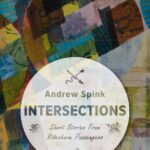The Lorax by Dr Seuss has been millions of children’s first introduction to environmentalism, its ominous warning incorporated into countless activist campaigns. Most adults probably assume the species the book describes meeting its doom came entirely from Seuss’ imagination. Almost 50 years after the book was written, however, clues to its origins have been found, leading to an interpretation even more ahead of its time than the one imputed by critics.
The story recounts the felling of forests of Truffula trees, to be turned into “thneeds”, because “business is business! And business must grow”. The titular character repeatedly pops up claiming to “speak for the trees” and demand the destruction cease, but is ignored, until the last tree is felled, leaving behind a blasted, barren landscape.
Seuss (Theodor Geisel) invented species at a great rate, so it wouldn’t be surprising if the book’s Truffula trees and Bar-ba-loots were as imaginary as Star-Belly Sneetches. However, Seuss also built powerful cartoons around reality, such as his warnings about the dangers of fascism at a time when most Americans were heedless.
Dartmouth University Professors Nathaniel Dominy and Donald Pease scoured the book, and Seuss’ life, for clues to its inspiration, and how that might change the meaning.
Most of the much-lauded book was written while Seuss was visiting Kenya in 1970, just as the environmental movement was making its first impact in the United States. The healthy Truffula trees look like giant dandelions. However, the book also portrays spikey remnant trees that resemble the whistling thorn acacias Seuss would have seen on his trip.

Dominy and Pease argue in Nature Ecology & Evolution that this similarity is the key to understanding the book. The acacia thorns have a commensal relationship with patas monkeys, who get most of their diet from the trees, but don’t harm them in the process. The Lorax looks and even sounds like the orange monkeys, something Dominy confirmed by having image recognition software compare Seuss’ drawings with a variety of monkey species.
If the Lorax represents the monkeys, the paper claims, he is not an external owner asserting authority, as most discussions of the book have suggested. Instead, the Lorax is; “A part of the ecological system, not apart from it,” Pease said in a statement. The book becomes not just a warning about overharvesting and pollution, but a forerunner of the deep ecology movement.
The paper notes the whistling thorns are today overgrazed and drought-stricken, and the monkeys’ range collapsing. Just as the Lorax ends with a message of hope, however, Dominy and Pease believe both can still be saved. Perhaps the discovery will spark a tourism revival among those who love the book, making acacia thorns more valuable alive than dead.






